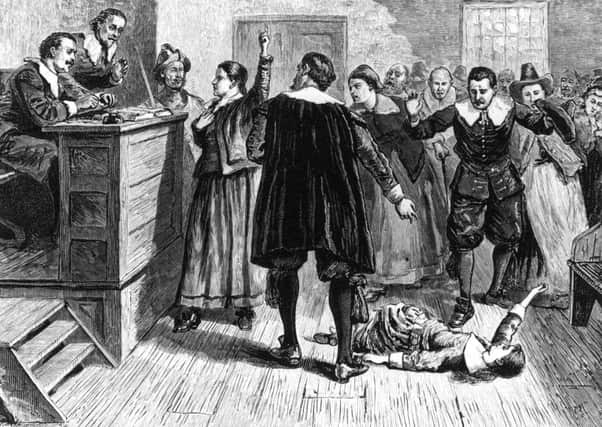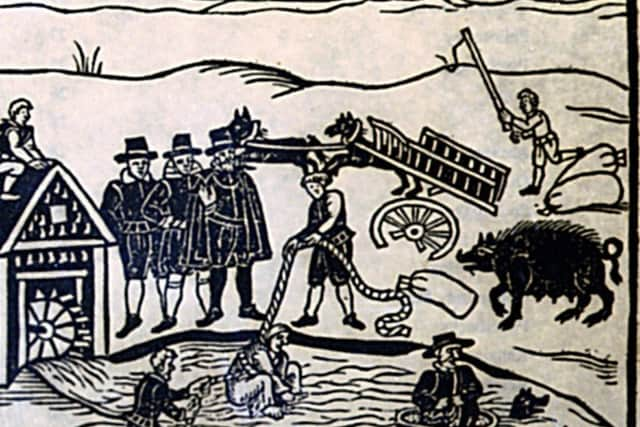Five of Scotland’s infamous witchcraft trials


Bessie Dunlop of Ayrshire
In 1576, thirteen years after the Witchcraft Act was passed in Scotland, Bessie Dunlop was a married woman - the wife of Andrew Jack from Lyne in Ayrshire, when she was arrested due to her longstanding reputation as a healer.
Bessie also had a skill for helping people find stolen goods and was charged with: ‘the using of sorcerie, witchcraft and incantatione, with invocation of spretis of the devill, continewand in familiarite with thame, at all sic tymes as sche thocht expedient, deling with charmes, and abusing pepill with devillisch craft of sorcerie foirsaid.. usit thie divers yeiris bypast.’


Advertisement
Hide AdA jury found Bessie guilty of all the charges against her, and she was condemned to death.
The North Berwick Witches
The North Berwick witch trial was the first mass witch trial to take place in Scotland, and the case quickly achieved notoriarty - even in those cruel times - for the manner in which some of those who were charged suffered for the accusations that had been made against them.
In the charges against the witches there was a notion that the persons involved had been taking part in ceremonies in which the devil was said to have appeared.


In 1590 King James VI was informed that in North Berwick, a fishing port on the east coast of Scotland, a coven of witches has been working against the king, trying to cause his death through sorcery.
Many of the accused suffered terrible torture at the hands of interregators and many gave detailed confessions, including Agnes Simpson who admitted she was a witch and guilty of ‘treacherous and devillish deeds’.
Many of those put on trial were burned alive.
Margaret Barclay of Irvine


Margaret Barclay was married to Archibald Dean, a respected citizen of Irvine, Renfrewshire. She was known for her fiery temper.
Advertisement
Hide AdAfter a quarral erupted between Margaret and her in-laws in 1618 over an alleged theft, Margaret was accused of cursing her sister-in-law Janet Dean.
Margaret was later said to have cursed a cargo boat owned by her brother-in-law John Dean. When the boat was recorded as lost at sea - with John onboard - Margaret was arrested on suspicion of witchcraft.
Advertisement
Hide AdInterogaters placed iron bars upon her outstreched legs one at a time until the pain became unbearable, eventually drawing a confession out of her.
She was sentenced to death.
Agnes Finnie
Agnes Finnie’s story may already be familiar to some of those who have taken part in ‘witch’ tours around Scotland’s capital city.
She was a trader in Edinburgh, a fishwife from Potterow - with a sharp tongue and a foul temper.
Spiteful in the extreme, she was also the victim of the terrible spite of others and when she was tried for witchcraft in 1642, there was no shortage of people to come forward to testify for her malevolence.
As argument followed argument and customers and neighbours fell prey to more misfortunes, rumours were spreading fast about Agnes Finnie and over time, with the help of unfortunate coincidence, she managed to dig a hole for herself so deep that she could not hope to get out.
Agnes was found guilty of witchcraft and executed on Castle Hill.
The witches of Bo’ness
Advertisement
Hide AdIn 1679, when witch fever was showing signs of dying down in other parts of Scotland, one of the last multiple trials to take place for witchcraft send six people from the area of Bo’ness to their deaths.
At a time when charges of witchcraft were becoming gradually less frequent and were being treated with greater scepticism then they might have been before, this case was all the more horrifying for the fact that those who were charged and executed had comparatively little charged against them in the way of malefice.
Advertisement
Hide AdThe charges against them mostly concerned what appears to have been drunken and libidinous behaviour.
They were also said to have made a Demonic Pact.
In addition it was said that the women had indulged in intercourse with the devil and that on several occasions, over the period of years that the accused, five women and one man, had drunk large quantities of ale in the Devil’s company.
The accused were Annabel Thompson, Margaret Pringle, Bessie Vicker, William Craw, and two women with the same name - Margaret Hamilton.
On December 23, 1679, all six were led to the Corbiehill, to the west of Bo’ness, where they were all strangled at the stake and burnt to ashes.